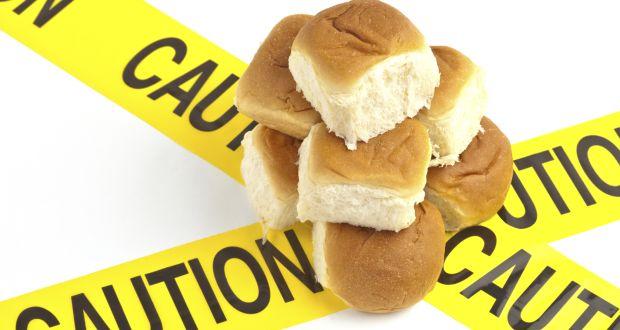Dial down the intensity.
Exercising too hard without enough recovery time increases levels of the stress hormone cortisol, says Jade Teta, an integrative physician and author of The Metabolic Effect Diet. This causes your body to hold onto belly fat. So how do you hit that sweet spot between calorie-burning effort and adequate rest? When doing high-intensity workouts, trainer Michelle Lovitt recommends wearing a heart-rate monitor and aiming for 85 to 90% of max HR during intervals and 60 to 70% during recoveries.
Write (some of) it down.
Food journaling is a great way to become more aware of what you're putting in your mouth, but it can get boring fast. "When people feel overwhelmed by something, they tend to stop altogether," says clinical psychologist Ninoska Peterson, PhD. So she recommends journaling twice during the week and once on weekends. In a recent study, 220 women who wrote down what they ate at least 3 days per week lost an average of 11 pounds in 18 months.
Cut your workouts in half.
In a study from the University of Copenhagen, participants who exercised 30 minutes per day for 3 months lost about 8 pounds, while those who worked out 60 minutes per day lost only 6 pounds. Since a half hour of exercise isn't as exhausting as a full hour, you're less likely to end up on the couch for the rest of the day and remain active, which burns even more calories. Longer workouts also make it more likely you'll reward yourself with food afterwards.
Spend more time in bed.
When you don't get enough shut-eye, you're more likely to eat high-calorie foods, according to researchers at the University of Colorado. Twenty-three men and women spent two nights in a sleep lab. On the first morning, after about 8 hours of rest, they rated how strongly they desired different foods. About a week later, they returned to the lab, stayed up all night, and then rated those foods again. Cravings for desserts and chips skyrocketed. Researchers speculate that lack of sleep disrupts the brain's pathways, making us more prone to poor decisions.
Schedule more rest days.
"Building in recovery time lets your body repair itself between workouts," says trainer Rachel Cosgrove. This means you'll build more metabolism-revving muscle mass, which helps you burn more calories even when you're not at the gym. Of course, just because it's a rest day doesn't mean you should do nothing. Think "active rest" gentle yoga, walking the dog, gardening... "The goal of a recovery day is to get the blood flowing, to stretch, and move your body gently," says Cosgrove.
Strength train just 2 days per week.
Adding resistance training to your exercise routine does wonders for weight loss. (The more muscle mass you have, the higher your metabolism.) But don't overdo things. It's the rest-and-recovery principle at work again. According to Wayne Westcott, PhD, director of fitness research at Quincy College, it's just as effective to strength-train twice per week as it is to do it every other day. In fact, in a recent study, those who strength-trained twice weekly for 10 weeks had the same increase in muscle mass—an average of 3.1 pounds—as those who added a third weekly session. Same results in less time? Slackers rejoice!




